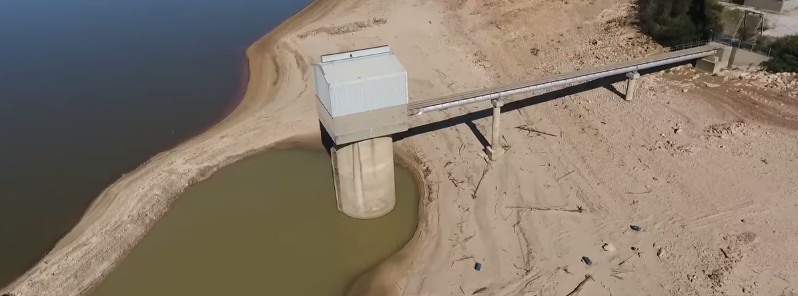Severe water crisis in Cape Town caused by worst drought in over a century

Cape Town, South Africa's seat of Parliament and the legislative capital, is enduring its worst drought in over a century and severe water crisis. This forced officials to impose strict Level 4 water restrictions, effective as of Thursday, June 1, 2017. While the measures will have short-term effects, some experts warn them alone will not solve the problem.
Cape Town is using 5 dams to collect its drinking water, and as of May 29 those dams, collectively, are at 19.7%. This is 0.8% down since last week. However, since the last 10% of that water is not usable, Cape Town's 4 million residents have only 9.7% of usable water left, less than 60 days of normal consumption.

City officials have therefore approved Level 4 water restrictions, limiting residents to only 100 liters (26 gallons) of water per person per day. The measure also bans all use of municipal water for outside and non-essential use.
Several factors are to blame for Cape Town's stressed water supply, including a growing population, ENSO (El Niño Southern Oscillation) and a rapidly changing climate, according to the CNN meteorologists.
A long-term drying trend (also known as desertification) is evident in the decreasing levels of Cape Town's parched reservoirs, which are intended to supply the city's water. Winter cold fronts driven by strong westerly winds typically bring replenishing rains to Cape Town. But these rainfalls have become less and less frequent as an expansive area of high pressure in the Atlantic Ocean still dominates the weather in the region, acting as a barrier to wet weather systems.
University of Cape Town climate scientist Peter Johnston said officials are faced with a long-term problem. "What we’ve had now is three seasons in a row where the rainfall has been low, and that’s a one-in-a-hundred-year occurrence," Johnston told AFP.
Although strong summer rains have seen much of southern Africa recover from drought, Cape Town receives most of its rain in the southern hemisphere’s winter – and scientists warn there is no guarantee of a good rainy season ahead.


What's especially troubling is that even if the city gets a real wet winter this season, the dam levels would only go up by about 40 to 50% and this time next year, the city would be in the same problem. Experts say Cape Town needs at least 3 wet winters to replenish its water supplies, so city officials are forced to think about other solutions.
One of them involves recycling waste water and drilling into aquifers under the nearby Table Mountain landmark. This would only solve a part of the problem so the city is also trying to accelerate plans to build two desalination plants, a move already adopted by some of the driest towns in the region.
Past weather patterns suggest the drought will eventually end. And when it does, it will be a deluge.
Featured image: Theewaterskloof Dam near Villiersdorp, South Africa. Credit: Adam Spires

Commenting rules and guidelines
We value the thoughts and opinions of our readers and welcome healthy discussions on our website. In order to maintain a respectful and positive community, we ask that all commenters follow these rules:
We reserve the right to remove any comments that violate these rules. By commenting on our website, you agree to abide by these guidelines. Thank you for helping to create a positive and welcoming environment for all.